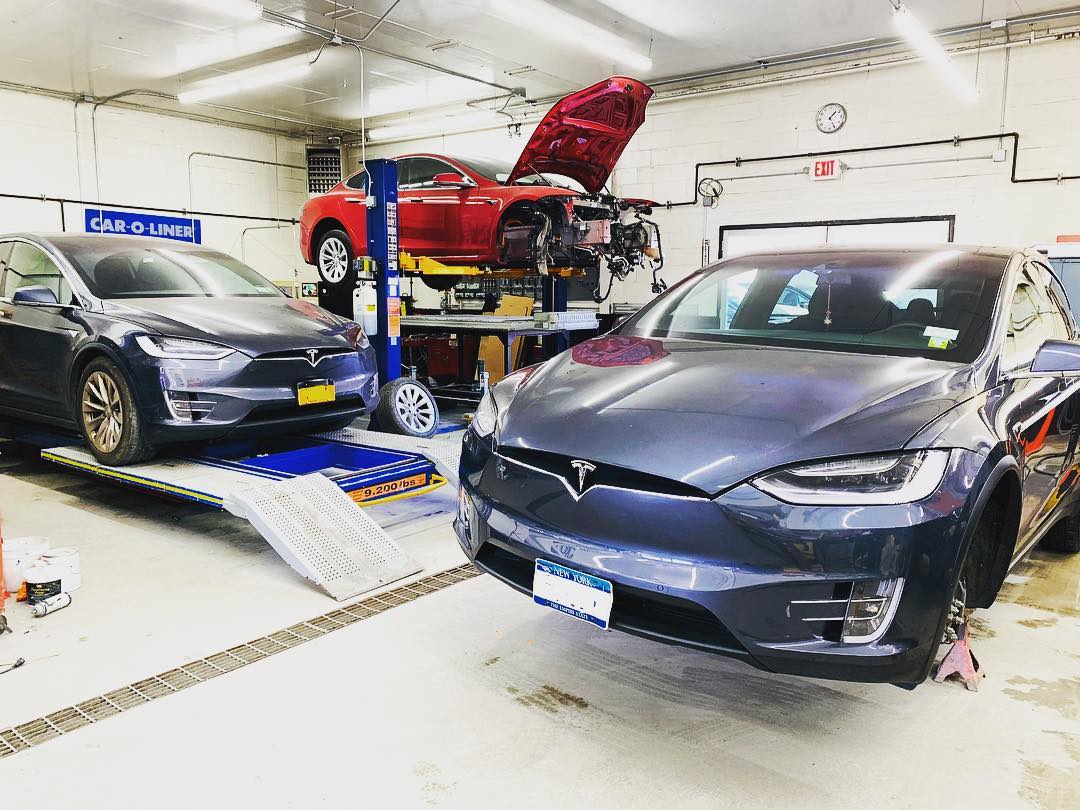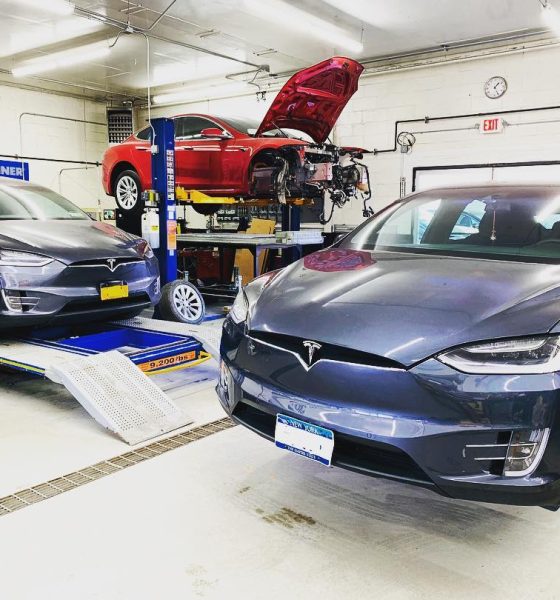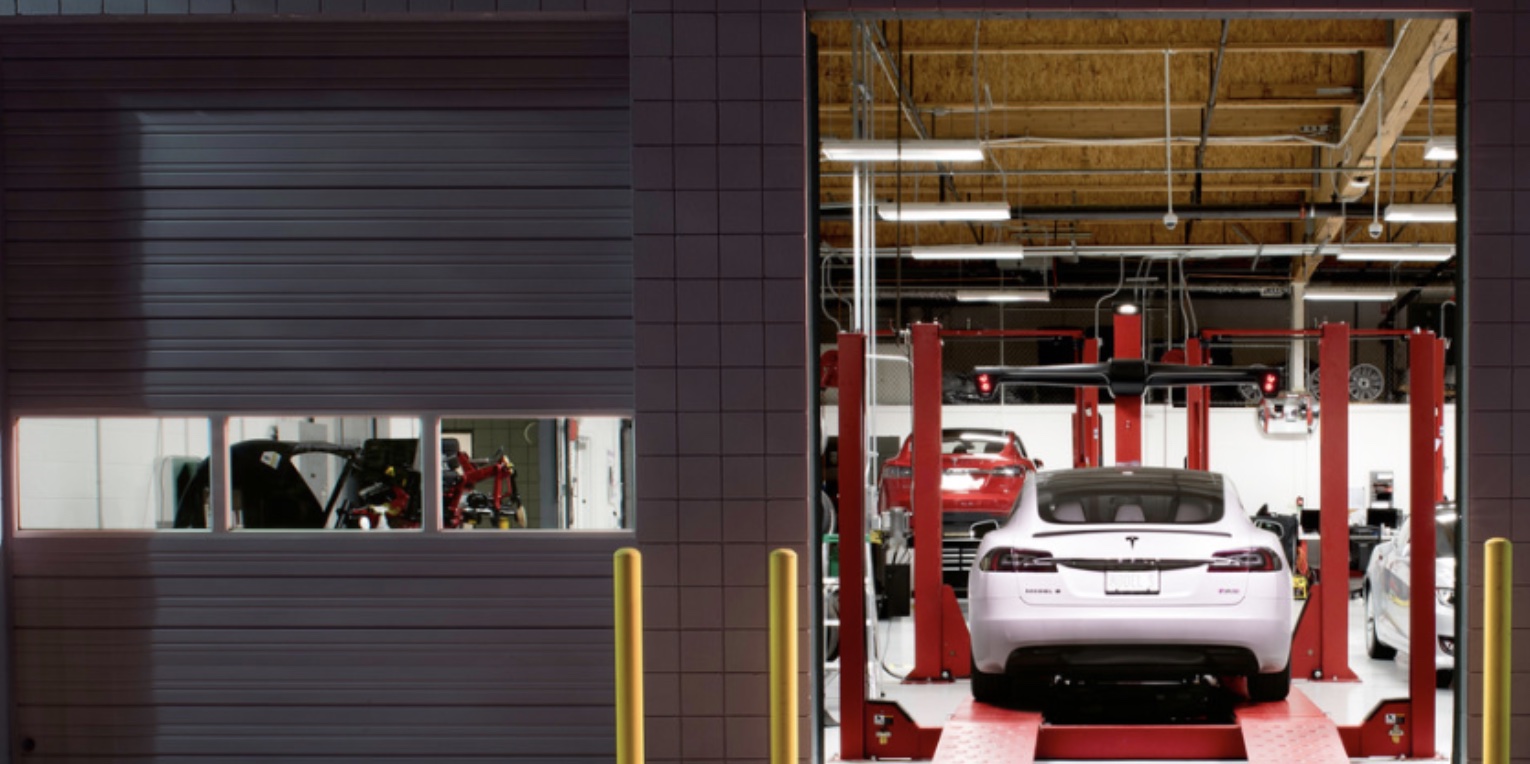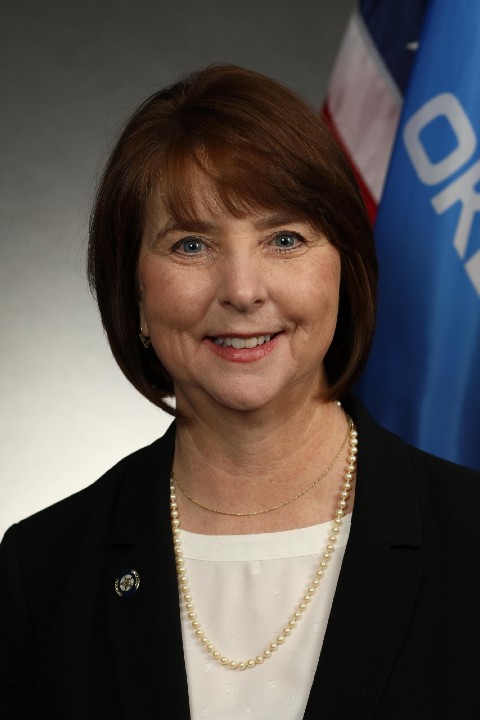

News
As OK’s anti-Tesla bill moves forward, its author believes a compromise is possible
The electric vehicle community in the United States took a collective gasp earlier this month when a proposed House Bill in Oklahoma unanimously passed a committee vote. The bill in question, HB 3994, aims to update and change parts of existing Oklahoma statutes related to the state’s auto industry. Now, this may sound harmless enough, but a look at the 70-page bill shows that companies like Tesla could lose out heavily if HB 3994 becomes law.
Tesla is already not allowed to directly sell its cars to consumers in Oklahoma, but HB 3994 could give the company even more headaches. What is particularly alarming with HB 3994’s language is the fact that it could be interpreted as a means to prevent automakers like Tesla from delivering and servicing vehicles in the state. This may result in Oklahoma-based Tesla owners being required to travel out of state just to have their vehicles serviced.
Tesla takes the bill very seriously, with the company urging owners on its Engage page to vote “No” to HB 3994. “If passed, this bill could force Tesla to close its existing locations in Oklahoma and prevent Tesla from shipping cars to anyone in the state, which would force locals to travel out-of-state to service their cars or pick up their new Tesla vehicles. Oklahoma should focus on increasing revenue and jobs in the state, not stifling competition and limiting consumer choice,” Tesla noted on its Engage page.
Oppositions and Risks
To state that Oklahoma-based Tesla owners are passionately trying to prevent HB 3994 from progressing further would be an understatement. Tesla owners are currently lobbying against the bill, with some even heading to the capitol last week to speak with the bill’s author, Representative Mike Dobrinski, who has an extensive background in the state’s auto sector. As per Dobrinski’s LinkedIn page, he was the Owner/Dealer of Dobrinski Chevrolet, Inc. until March 2017, and he was the Dealer/Owner of Dobrinski of Kingfisher, Inc., a Chevrolet-Buick-GMC dealership, until October 2018.
The Tesla owners’ talk with the Representative at the capitol last week was brief, according to information shared with Teslarati. Dobrinski highlighted the idea that HB 3994 is a way to protect Tesla owners in Oklahoma because if the EV maker refuses to cover its customers under warranty, then consumers will have no backup. Such a scenario seems unlikely, however.
It’s not just Tesla owners in the state who are against HB 3994. Oklahoma Senator Mary B. Boren, who drives a Tesla Model 3 herself, has openly criticized the bill. In a short conversation with Teslarati, Senator Boren noted that Oklahoma must let the product and the market decide if the state wants innovation to flourish. Initiatives such as HB 3994, which could result in automakers with no dealerships getting the short end of the stick, are counterproductive.
The Senator’s statements could very well ring true. Just recently, reports emerged that Tesla battery partner Panasonic has decided to acquire a factory site in the United States for the production of high-capacity lithium-ion batteries. Panasonic has reportedly shortlisted its preferred US locations to Oklahoma and Kansas. Senator Boren remarked that the presence of bills like HB 3994 could potentially discourage companies like Panasonic from investing in Oklahoma.
“If you have capitalistic laws being passed to protect a particular industry and their business model and to insulate them from the market demands that require them to adjust, then any innovative industry related to EVs will notice that — and they will notice that cronyism is at play. They will find friendlier environments,” Sen. Boren said.
Insights from HB 3994’s Author
The fact that HB 3994 unanimously passed a committee vote earlier this month shows that the bill is also seeing substantial support, despite its harsh repercussions on companies like Tesla and its local electric vehicle owners. When asked by Teslarati about the rationale behind the controversial bill, Rep. Dobrinski explained that HB 3994 is a request bill from the Oklahoma Auto Dealer Association.
“A request bill from the Oklahoma Auto Dealer Association, it seeks to strengthen the position of franchised dealers from the ever-increasing demands and requirements of their legacy manufacturers. Doing so requires addressing Direct Shippers, including Tesla, that are not currently regulated by the Oklahoma Motor Vehicle Commission like franchised dealers are. Proper legislation and regulation will ensure that existing service facilities may remain open and consumers will have additional protections,” Dobrinski noted.
Interestingly enough, the Representative admitted that while HB 3994 includes provisions that may be used to force Tesla into closing its service centers in the state, he does not expect that part of the bill to make it to HB 3994’s final iteration. “I do not expect that provision to be included in the (bill’s) final language,” Dobrinski later stated.
The Representative deserves praise for his honesty with HB 3994, though one may wonder why the controversial bill’s most heavy-handed provisions were included in the first place. When confronted by Tesla owners online, Dobrinski has maintained that HB 3994 is far from finished, but it has already opened the doors for communication among automotive businesses in the state.
“This bill, as introduced, is far from the finished product. It is forcing engagement from franchise auto dealers, legacy manufacturers, and new EV manufacturers, including Tesla. These folks are all talking now for the first time ever to work on a plan of regulation going forward that ensures competition and improves customer satisfaction under the purview of the Oklahoma Motor Vehicle Commission,” Dobrinski wrote.
A Price for Compromise?
Considering the statements of HB 3994’s author, it appears that the bill could partly be seen as a way to achieve a compromise of sorts between companies like Tesla, electric vehicle owners, and the state’s franchised auto dealerships. However, existing Tesla owners in Oklahoma fear that if HB 3994 passes into law, it could adversely affect not only their ownership experience but also their daily lives.
Cristen Winter Huber, a Tesla owner and a foster mother, is one of them. Being a foster mother, Huber is unable to take her foster children outside Oklahoma without a judge’s permission. According to Huber, the harsher portions of HB 3994 could effectively disrupt her family dynamic, and it might motivate her to leave the state.
“It’s not feasible for my family to drive out of state frequently. I’m a parent and foster parent. I have to get approval from a judge to take my foster child out of state. If I have to leave the state to service my car, I might as well move to a state that welcomes growth and innovation,” Huber said.
Jochen Hoppert, the President of the Tesla Owners Club of Oklahoma, noted that HB 3994 is not only a step in the wrong direction — it can have repercussions far beyond Tesla. The Tesla Club President also stated that so far, the EV maker’s service centers in Oklahoma City and Tulsa are proving that Tesla is serious about supporting its customers.

“Tesla is still not permitted to sell or deliver vehicles from those locations. We hope that will change in the future, yet this anti-competitive bill is clearly a step in the opposite direction. It’s worth noting that this move would not only negatively affect Tesla and the local Tesla community but other up-and-coming electric vehicle manufacturers wishing to do business in the state.
“Rep. Mike Dobrinski, the creator of this bill… has shared his perspective, which includes the notion that this bill would provide benefit to the consumer by allowing the state to manage the presence of warranty, service, and other such things for the consumer as required features of the electric vehicle marketplace. The Tesla service centers in Oklahoma City and Tulsa already demonstrate Tesla’s desire to provide its customers with such services,” Hoppert said.
Following its unanimous committee approval, House Bill 3994 has now advanced to the House Floor. But before the bill could become a law, the Oklahoma Governor would have to approve it first. With this in mind, Tesla owners and electric vehicle advocates still have some time to fight against the bill, or at least lobby for significant changes. Rep. Mike Dobrinski himself has been consistent with the idea that HB 3994 is still open for edits, so it may be a good idea for Tesla owners in the state to push their efforts even more from this point forward.
Those interested in speaking up and supporting Tesla’s efforts against Oklahoma’s HB 3994 could click here.
A copy of Oklahoma HB 3994 could be viewed below.
Hb3994 Int by Simon Alvarez on Scribd
Don’t hesitate to contact us with news tips. Just send a message to simon@teslarati.com to give us a heads up.

Elon Musk
Tesla’s Elon Musk: 10 billion miles needed for safe Unsupervised FSD
As per the CEO, roughly 10 billion miles of training data are required due to reality’s “super long tail of complexity.”

Tesla CEO Elon Musk has provided an updated estimate for the training data needed to achieve truly safe unsupervised Full Self-Driving (FSD).
As per the CEO, roughly 10 billion miles of training data are required due to reality’s “super long tail of complexity.”
10 billion miles of training data
Musk comment came as a reply to Apple and Rivian alum Paul Beisel, who posted an analysis on X about the gap between tech demonstrations and real-world products. In his post, Beisel highlighted Tesla’s data-driven lead in autonomy, and he also argued that it would not be easy for rivals to become a legitimate competitor to FSD quickly.
“The notion that someone can ‘catch up’ to this problem primarily through simulation and limited on-road exposure strikes me as deeply naive. This is not a demo problem. It is a scale, data, and iteration problem— and Tesla is already far, far down that road while others are just getting started,” Beisel wrote.
Musk responded to Beisel’s post, stating that “Roughly 10 billion miles of training data is needed to achieve safe unsupervised self-driving. Reality has a super long tail of complexity.” This is quite interesting considering that in his Master Plan Part Deux, Elon Musk estimated that worldwide regulatory approval for autonomous driving would require around 6 billion miles.
FSD’s total training miles
As 2025 came to a close, Tesla community members observed that FSD was already nearing 7 billion miles driven, with over 2.5 billion miles being from inner city roads. The 7-billion-mile mark was passed just a few days later. This suggests that Tesla is likely the company today with the most training data for its autonomous driving program.
The difficulties of achieving autonomy were referenced by Elon Musk recently, when he commented on Nvidia’s Alpamayo program. As per Musk, “they will find that it’s easy to get to 99% and then super hard to solve the long tail of the distribution.” These sentiments were echoed by Tesla VP for AI software Ashok Elluswamy, who also noted on X that “the long tail is sooo long, that most people can’t grasp it.”
News
Tesla earns top honors at MotorTrend’s SDV Innovator Awards
MotorTrend’s SDV Awards were presented during CES 2026 in Las Vegas.

Tesla emerged as one of the most recognized automakers at MotorTrend’s 2026 Software-Defined Vehicle (SDV) Innovator Awards.
As could be seen in a press release from the publication, two key Tesla employees were honored for their work on AI, autonomy, and vehicle software. MotorTrend’s SDV Awards were presented during CES 2026 in Las Vegas.
Tesla leaders and engineers recognized
The fourth annual SDV Innovator Awards celebrate pioneers and experts who are pushing the automotive industry deeper into software-driven development. Among the most notable honorees for this year was Ashok Elluswamy, Tesla’s Vice President of AI Software, who received a Pioneer Award for his role in advancing artificial intelligence and autonomy across the company’s vehicle lineup.
Tesla also secured recognition in the Expert category, with Lawson Fulton, a staff Autopilot machine learning engineer, honored for his contributions to Tesla’s driver-assistance and autonomous systems.
Tesla’s software-first strategy
While automakers like General Motors, Ford, and Rivian also received recognition, Tesla’s multiple awards stood out given the company’s outsized role in popularizing software-defined vehicles over the past decade. From frequent OTA updates to its data-driven approach to autonomy, Tesla has consistently treated vehicles as evolving software platforms rather than static products.
This has made Tesla’s vehicles very unique in their respective sectors, as they are arguably the only cars that objectively get better over time. This is especially true for vehicles that are loaded with the company’s Full Self-Driving system, which are getting progressively more intelligent and autonomous over time. The majority of Tesla’s updates to its vehicles are free as well, which is very much appreciated by customers worldwide.
Elon Musk
Judge clears path for Elon Musk’s OpenAI lawsuit to go before a jury
The decision maintains Musk’s claims that OpenAI’s shift toward a for-profit structure violated early assurances made to him as a co-founder.

A U.S. judge has ruled that Elon Musk’s lawsuit accusing OpenAI of abandoning its founding nonprofit mission can proceed to a jury trial.
The decision maintains Musk’s claims that OpenAI’s shift toward a for-profit structure violated early assurances made to him as a co-founder. These claims are directly opposed by OpenAI.
Judge says disputed facts warrant a trial
At a hearing in Oakland, U.S. District Judge Yvonne Gonzalez Rogers stated that there was “plenty of evidence” suggesting that OpenAI leaders had promised that the organization’s original nonprofit structure would be maintained. She ruled that those disputed facts should be evaluated by a jury at a trial in March rather than decided by the court at this stage, as noted in a Reuters report.
Musk helped co-found OpenAI in 2015 but left the organization in 2018. In his lawsuit, he argued that he contributed roughly $38 million, or about 60% of OpenAI’s early funding, based on assurances that the company would remain a nonprofit dedicated to the public benefit. He is seeking unspecified monetary damages tied to what he describes as “ill-gotten gains.”
OpenAI, however, has repeatedly rejected Musk’s allegations. The company has stated that Musk’s claims were baseless and part of a pattern of harassment.
Rivalries and Microsoft ties
The case unfolds against the backdrop of intensifying competition in generative artificial intelligence. Musk now runs xAI, whose Grok chatbot competes directly with OpenAI’s flagship ChatGPT. OpenAI has argued that Musk is a frustrated commercial rival who is simply attempting to slow down a market leader.
The lawsuit also names Microsoft as a defendant, citing its multibillion-dollar partnerships with OpenAI. Microsoft has urged the court to dismiss the claims against it, arguing there is no evidence it aided or abetted any alleged misconduct. Lawyers for OpenAI have also pushed for the case to be thrown out, claiming that Musk failed to show sufficient factual basis for claims such as fraud and breach of contract.
Judge Gonzalez Rogers, however, declined to end the case at this stage, noting that a jury would also need to consider whether Musk filed the lawsuit within the applicable statute of limitations. Still, the dispute between Elon Musk and OpenAI is now headed for a high-profile jury trial in the coming months.










